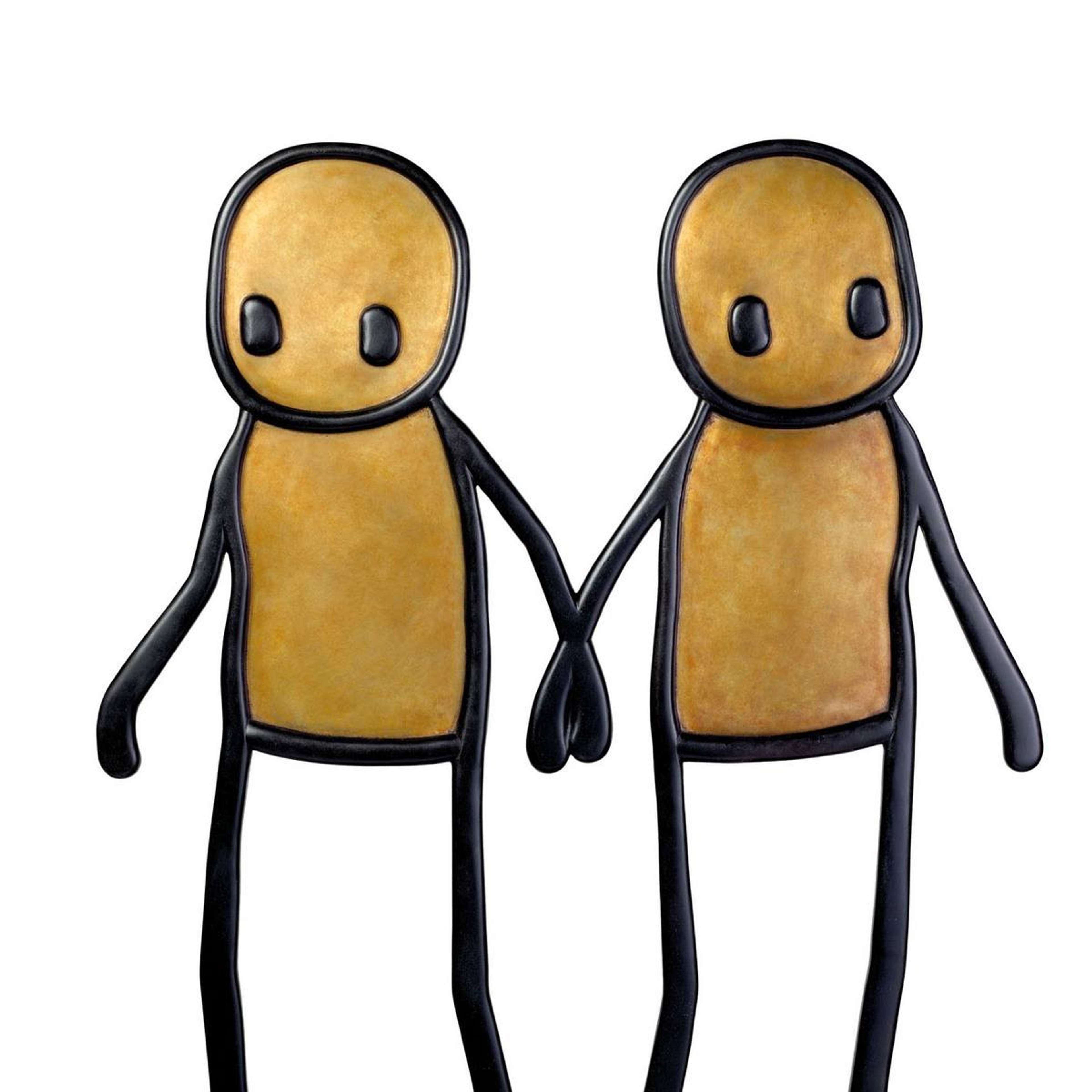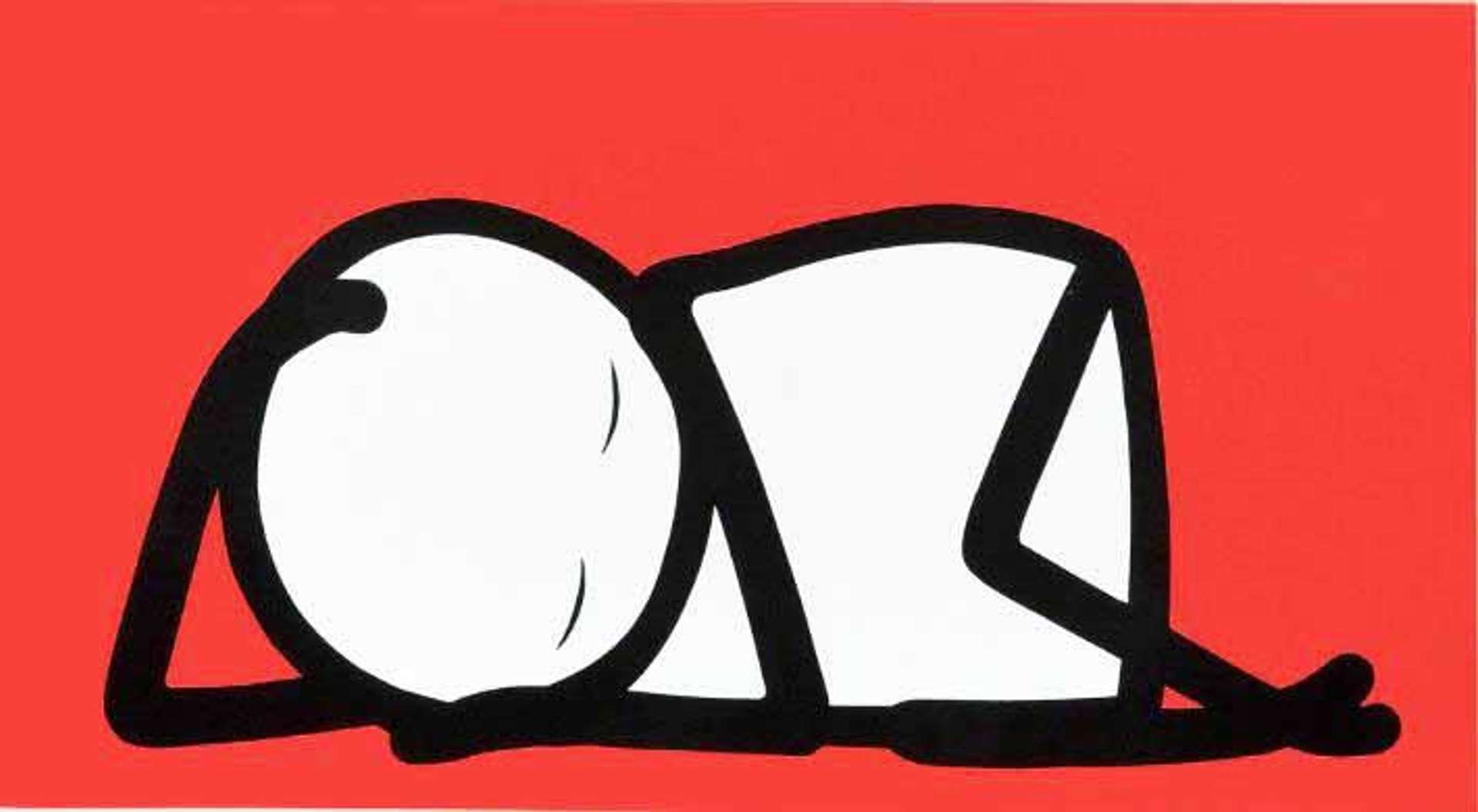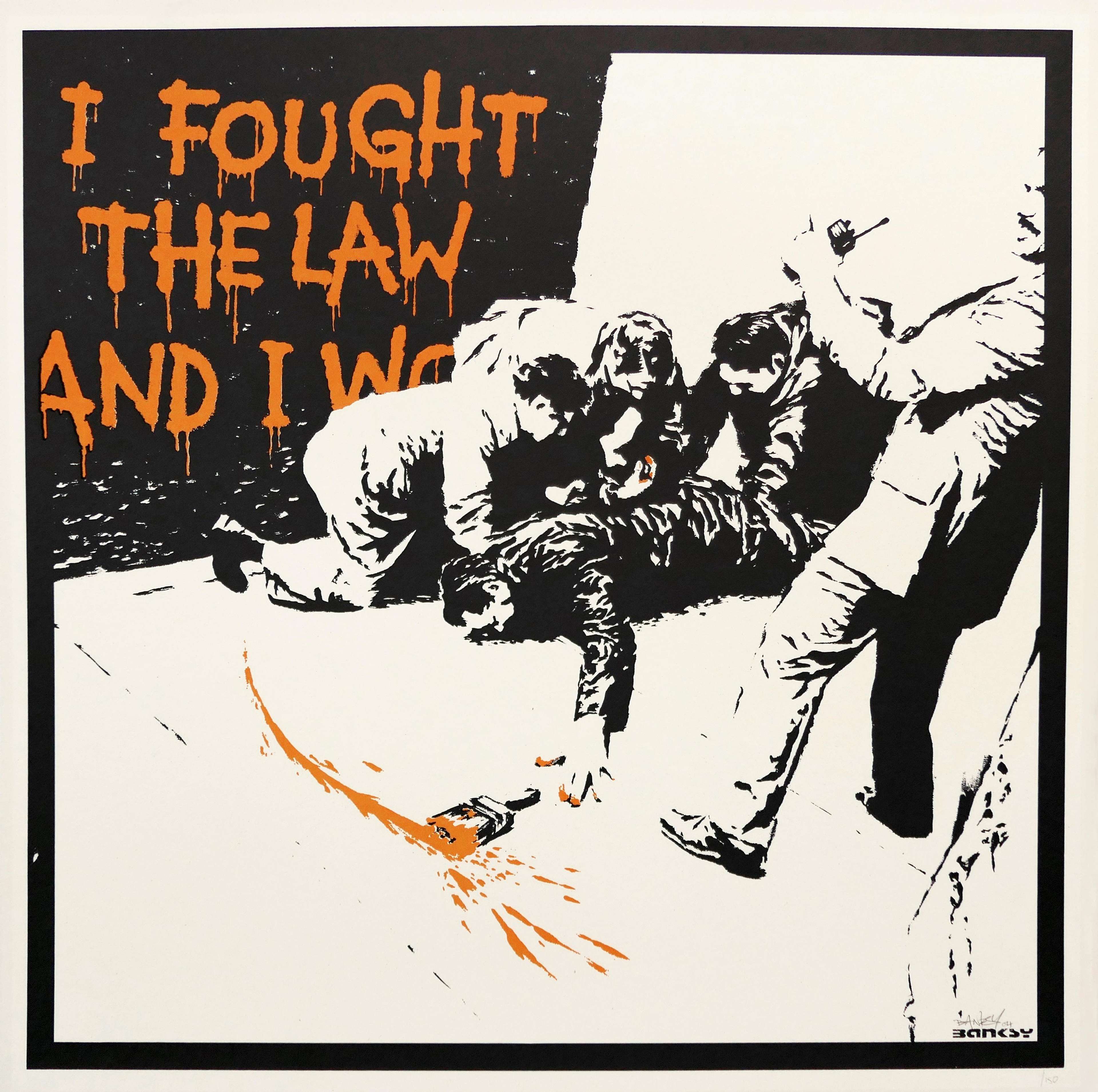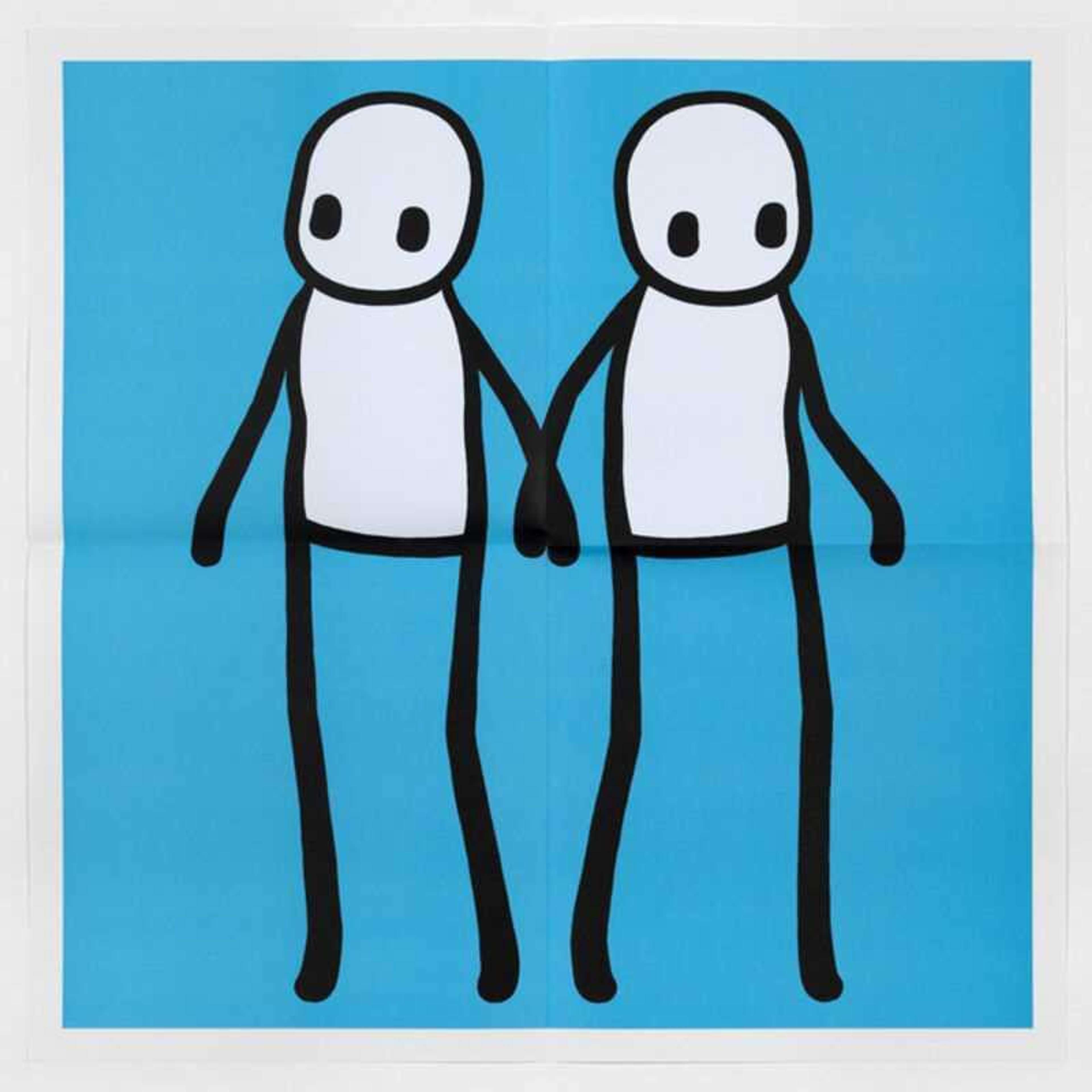 Holding Hands (Maquette) © Stik 2020
Holding Hands (Maquette) © Stik 2020
Stik
55 works
London-based street artist Stik is a veritable icon of the British Art scene. The artist and his work have become an emblem of urban struggle and the resistive power of art. Known for his signature ‘stick person’ paintings, his critical work peppers the streets of both the English capital and locations as diverse as Berlin, Tokyo and New York.
Read MyArtBroker's STIK Investment Guide In 2024.
How does Stik create graffiti art on the street?
Street artist, Stik, places critique of gentrification, displacement, urban decay, and the police at the centre of his bold and colourful work. Often working in situ, Stik’s artistic practice is actively defined by his surroundings and emotions. Stik identifies possible locations for his paintings before coming up with any designs and once a suitable location has been identified – the artist favours those that can be seen from the street – he will then make around 50 preparatory drawings. When painting his designs on the street, Stik predominantly uses just two materials: a black spray can and discarded white house paint, picked up from outside recently re-decorated houses.
These simple yet effective materials mimic the bold form of his stick characters, which mostly comprise just six lines and two dots. Stik’s working methods are designed to save time, and avoid arrest. Intensive practice and preparation are a reflection of necessity and of the difficulties in working on the street. Stik once stated:
Natural frames, such as doors or shutters, are also particularly attractive to Stik. According to the artist, these urban features help his artworks to attract the attention of passers-by. Unlike the gallery visitor, members of the unsuspecting public are 'switched off' to their surroundings, and so these organic 'frames' become important in helping us absorb the meanings and critiques in Stik's work. Think of a new kind of art gallery composed of the city itself, the buildings a canvas and the street a new place to take them in.
Stik’s mural Big Mother, which measured 125-feet in length, was painted onto the side of the Charles Hocking council estate in Acton, West London. Utilising the soon-to-be-demolished building as one such ‘frame’, the work’s location was central to its critique of urban exclusion and displacement, and gentrification.
 Image © Mabacam (CC) BB-NC-ND 2.0 / Big Mother © Stik 2014
Image © Mabacam (CC) BB-NC-ND 2.0 / Big Mother © Stik 2014Street Artist to Philanthropist
Stik’s graffiti art is always sure to maintain a distinctly political edge to combat social issues and injustices. Seen (2012), which comprises a painted satellite dish adorned with one of Stik’s unmistakable line-drawn figures, which was created in very fitting response to youth surveillance. Referencing the increased use of so-called ‘stop and search’ powers by the Metropolitan Police – powers which, Stik argues, disproportionately target the youth of Hackney borough – the work was erected on a wall neighbouring a police station in Clapton, East London.
Once erected in this carefully chosen location, the work was sold by the owners of the building to a gallery in upmarket Pimlico. Realising over £5,000 at sale, 100% of funds generated were re-invested in a youth project led by Groundwork, a local charity working with young people.
 Seen © Stik 2012
Seen © Stik 2012Stik and Authority
Stik’s confrontational stance towards authority has come to be a defining feature of his instantly recognisable art, and has profound influence on the creative process. In the early 2000s, the artist described being screamed at whilst painting the street illegally; confronted by an exasperated onlooker, who threatened to call the police, Stik was placed under citizen’s arrest. Recalling the incident, Stik commented, ‘So I said, “What’s the matter; why don’t you like it?” and she said, “I don’t like that colour! I hate that colour. It’s bright blue and I have to look at that every morning.” So I asked what she thought of another colour, and then she was fine with it.’ In the end, the police were not called.
In recent years, Stik and his work have succeeded in attracting the attention of the police, albeit for very different reasons. In November 2018, several original paintings by the artist were stolen from Dalston’s Eastern Curve Garden. The free-to-enter community space had received the works as a donation, and they had graced their walls for around 10 years. The paintings’ theft was registered on the Art Loss Register (ALR) database, but police inquiries failed to find a perpetrator.
Lost then Found?
In 2020, a more large-scale theft of Stik’s work took place. In the same year, the artist produced 100,000 prints of Holding Hands (2016) as a thank you to local residents for their kindness during the pandemic.
As part of the initiative, which Stik undertook in collaboration with Hackney Council, original prints were destined for release via copies of the local newspaper, Hackney Today. Slowly, however, they began to go missing. When residents were no longer receiving their prints, which were designed to be either kept or sold in order to help those in financial difficulty, a police investigation was launched.
Holding Hands depicts two figures who, despite facing away from each other, hold hands together in an expression of togetherness. Combining two of the artist’s signature figures within a single image, the piece sets Stik’s traditional iconography against a blue background in a reference to the colour of the UK’s National Health Service (NHS). Following a public appeal and a police investigation, in which 1 person was arrested, around 4,000 of the works were returned. Stik saw the story of the works’ return as an expression of exactly what the image sought to convey:
Personal Life
Stik has spent a large part of his life homeless on the streets of London’s East End; in 2012, it was reported by London’s Evening Standard that Stik had been living at St. Mungo’s homeless hostel in Hackney. It later came to light that he had been living there since 2009 – a decisive year in which he produced a huge number of artworks. Upon leaving the hostel in 2011, Stik began to produce a series of six large murals based on works by Old Master’s, such as Rubens and Gainsborough. Later in the same year, he held his first gallery show at the Dulwich Picture Gallery.






